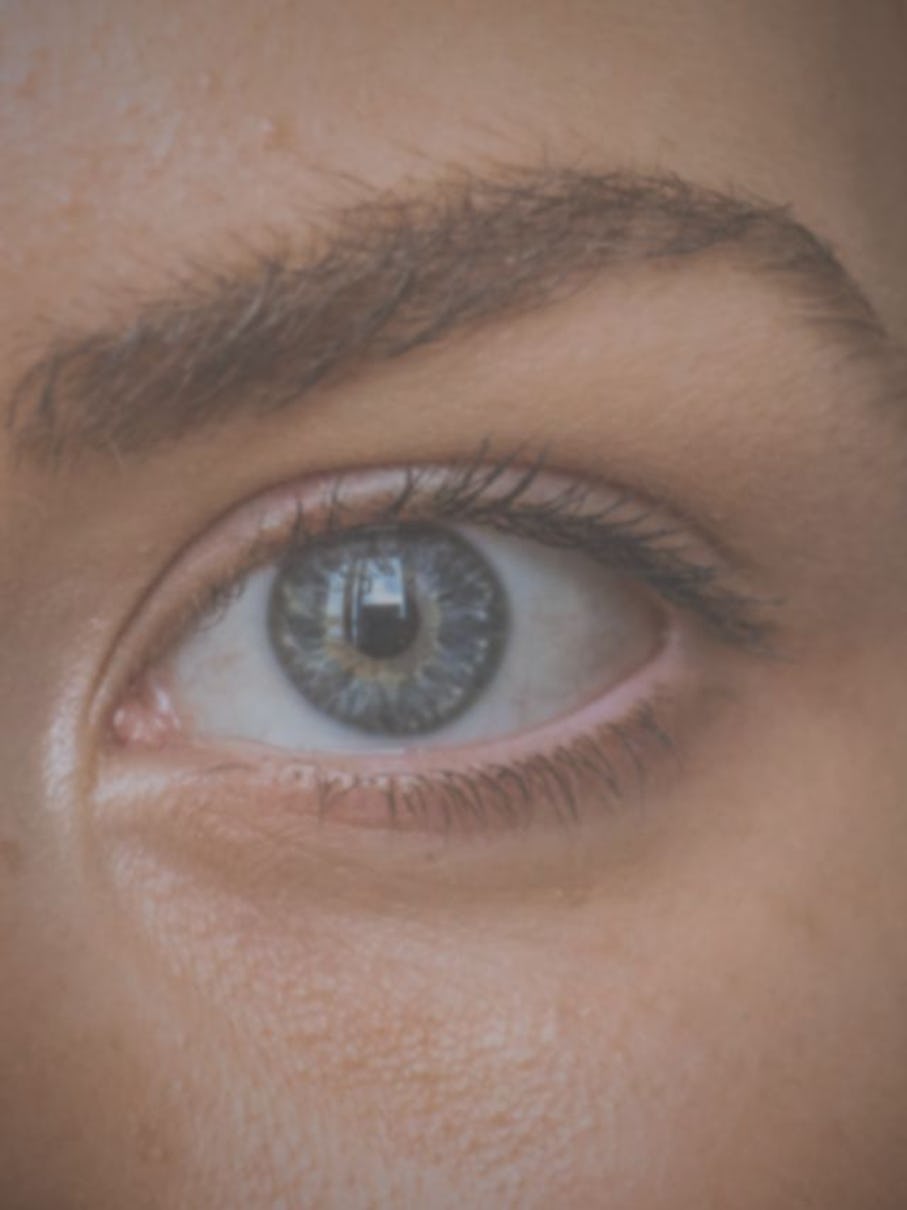
Blepharitis- Managing & Treating

Glaucoma - A Comprehensive Guide

Laser Eye Surgery - What to Expect

Cataracts - Causes, Symptoms & Treatments
Astigmatism is a refractive error affecting how light enters the eye, leading to distorted or blurred vision. The condition arises when the cornea or lens in the eye has an irregular shape. Normally, the cornea and lens are perfectly round, enabling light to enter the eye evenly, and the image is sharply focused on the retina. However, in the case of astigmatism, the cornea or lens has a more oval or football-like shape, causing the light to enter the eye at different angles, leading to distorted vision.
Astigmatism is a common condition affecting children and adults. It can occur with other refractive errors, such as nearsightedness (myopia) and farsightedness (hyperopia). Astigmatism can be corrected with glasses, contact lenses, or refractive surgery.

One of the leading causes of astigmatism is an irregularly shaped cornea or lens. The cornea is the eye's transparent outer layer, and the lens is the clear structure inside the eye that helps to focus light. The cornea and lens are spherical in a normal eye, allowing light to enter the eye evenly.
However, in astigmatism, the cornea or lens has a more oval or football-like shape, causing the light to enter the eye at different angles, which causes light to be focused unevenly on the retina, the light-sensitive tissue at the back of the eye - resulting in blurred or distorted vision.

Astigmatism can also be caused by eye injuries, eye surgery, or certain eye diseases such as keratoconus, where the cornea thins and bulges outwards, resulting in distorted vision.
In some cases, astigmatism can be inherited and passed down from parents to their children.
Astigmatism can occur on its own or in combination with other refractive errors, such as nearsightedness (myopia) or farsightedness (hyperopia). Astigmatism can also vary from mild to severe and may change over time.

Corneal astigmatism is the most common type of astigmatism, and it occurs when the cornea has an irregular shape.
Lenticular astigmatism occurs when the lens inside the eye has an irregular shape. Lenticular astigmatism is less common than corneal astigmatism. It is usually caused by an injury or a condition that affects the lens, such as cataracts.
Astigmatism can also be classified as regular or irregular. Regular astigmatism occurs when the cornea or lens has a consistent oval or football-like shape. Irregular astigmatism occurs when the cornea or lens is uneven or irregular, resulting from an injury or a corneal disease such as keratoconus.
Astigmatism can also be classified as simple or complex. Simple astigmatism occurs when the cornea or lens has a single curve that is more curved in one direction than the other. Complex astigmatism occurs when the cornea or lens has two curves, each more curved in different directions.
Astigmatism affects how light enters the eye, causing images to appear distorted or blurred.
Depending on the severity of astigmatism, a person's vision may be affected differently. Some people may experience mild blurring or distortion, while others may have more severe vision problems.


Certain situations (listed below) may cause symptoms to temporarily become more pronounced - but they do not cause an increase in the refractive error itself.
Prolonged screen time or engaging in activities that require intense focus for extended periods may cause eye strain, which can temporarily exacerbate the symptoms of astigmatism, such as blurry vision and headaches.
Wearing glasses or contact lenses with an outdated prescription or improper fit can aggravate astigmatism symptoms. Regular eye exams are crucial to ensure the accurate correction of Astigmatism.
Insufficient or excessively bright lighting can make it harder for individuals with astigmatism to see clearly, leading to increased eye strain and discomfort.
Frequently rubbing the eyes can cause temporary distortion in the cornea and lens, which may result in a transient exacerbation of astigmatism symptoms.
Dehydration can affect the eye's ability to produce tears, which may temporarily impact vision quality and increase discomfort for individuals with astigmatism.
Astigmatism can affect anyone, regardless of age, race, or gender. However, some people may be at a higher risk of developing astigmatism than others. For example, people who have a family history of astigmatism may be more likely to develop the condition. Additionally, certain eye conditions, such as keratoconus, can increase the risk of astigmatism.
Children are also at risk of developing astigmatism, as the shape of their eyes can change as they grow and develop. Children need regular eye exams to detect vision problems, including astigmatism, as early as possible.

Astigmatism cannot be cured but corrected with glasses, contact lenses, or refractive surgery.
Glasses or contact lenses can correct astigmatism by compensating for the irregular shape of the cornea or lens, allowing light to enter the eye evenly and creating a clear image on the retina.
Refractive surgery can also correct astigmatism by reshaping the cornea with a laser or other surgical technique.

Astigmatism results from an irregularly shaped cornea or lens. Myopia is caused by the eye being too long, or the cornea being too steeply curved.
Astigmatism leads to blurry or distorted vision at all distances due to the inability of the eye to focus light evenly on the retina. In contrast, myopia primarily affects distance vision, causing objects far away to appear blurry, while close-up vision remains clear.
Both astigmatism and myopia are common refractive errors. However, myopia is more prevalent, affecting a significant proportion of the global population, with increasing prevalence in recent years.
While both conditions can be corrected with prescription eyeglasses or contact lenses, the specifications differ. Astigmatism requires a cylindrical lens to correct the uneven curvature of the cornea or lens. At the same time, myopia necessitates a spherical lens to adjust the focal point of light onto the retina. A combined prescription addressing both refractive errors is used for individuals with both astigmatism and myopia. Alternatively, refractive surgeries such as LASIK or PRK can reshape the cornea, addressing astigmatism and myopia.
The progression of astigmatism and myopia can vary. Myopia typically develops during childhood and may stabilize or progress during adolescence and early adulthood. Astigmatism, however, can develop at any age and may remain stable or change over time.
The most common treatment for astigmatism is corrective lenses, such as glasses or contact lenses. Glasses or contact lenses can compensate for the irregular shape of the cornea or lens and allow light to enter the eye evenly, resulting in clear vision. Depending on the severity of astigmatism, special types of contact lenses may be required, such as toric or rigid gas-permeable lenses.
In some cases, people with astigmatism may benefit from orthokeratology (ortho-k). Ortho-k is a non-surgical treatment that uses special contact lenses to reshape the cornea while you sleep. The lenses are worn overnight and removed in the morning, and they can temporarily correct astigmatism and other refractive errors.

Refractive surgery is another option for treating astigmatism. Refractive surgery can reshape the cornea using a laser or other surgical technique to correct the cornea's irregular shape and improve vision. Types of refractive surgery for astigmatism include:

This test measures how well you can see letters or numbers on an eye chart from a distance.
This test determines the amount of refractive error you have by using a phoropter, an instrument with multiple lenses that allows the eye doctor to determine the correct prescription for glasses or contact lenses.
This test measures the cornea's curvature by focusing light on the cornea and measuring the reflection.
This test creates a detailed map of the shape of the cornea, which can help identify irregularities that may be causing astigmatism.
This test examines the back of the eye to check for abnormalities or conditions affecting your vision.
Astigmatism is a common condition affecting how light enters the eye, leading to distorted or blurred vision. It is caused by an irregularly shaped cornea or lens, and it can be diagnosed through a comprehensive eye exam.
Astigmatism can be corrected with glasses, contact lenses, or refractive surgery. In some cases, orthokeratology may be a viable treatment option.
